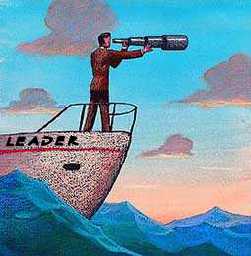 In the business world, scepticism about change initiatives is rampant. Not only do some 70 per cent of such efforts fail, but even those that look successful at first often prove unsustainable in the organisational culture. This statistic does not come as a big surprise to those who remember the words of Niccolò Machiavelli, written in the 1500s: “It must be remembered that there is nothing more difficult to plan, more doubtful of success, nor more dangerous to manage, than the creation of a new system.” Because change disturbs and threatens those who are comfortable with the way things are, it tends to have few adherents, especially when first broached. But that is no excuse for avoiding the difficulties encountered when trying to drive needed change.
In the business world, scepticism about change initiatives is rampant. Not only do some 70 per cent of such efforts fail, but even those that look successful at first often prove unsustainable in the organisational culture. This statistic does not come as a big surprise to those who remember the words of Niccolò Machiavelli, written in the 1500s: “It must be remembered that there is nothing more difficult to plan, more doubtful of success, nor more dangerous to manage, than the creation of a new system.” Because change disturbs and threatens those who are comfortable with the way things are, it tends to have few adherents, especially when first broached. But that is no excuse for avoiding the difficulties encountered when trying to drive needed change.More, the need for change is not new. In 500 BC, Heraclitus stated that “everything is in flux”, like the constant flow of a river. Unfortunately, today we all live in a time when organisations face a need for change as a result of what is better described as a raging torrent than a flow. Threats from competitors appear almost overnight. New technologies are adapted in what seems like nanoseconds, bringing new processes and improved methods of production. In addition, enhanced versions of older products keep appearing as do new products that make older ones obsolete. In fact, ‘new and better’ and ‘more effective and more efficient’ have become watchwords, making the ability to change and adapt crucial to continual success, to increased profits — and, indeed, survival. Moreover, as John Kotter has pointed out, “The rate of change is not going to slow down any time soon. If anything, competition in most industries will probably speed up even more.”
See full Article.



